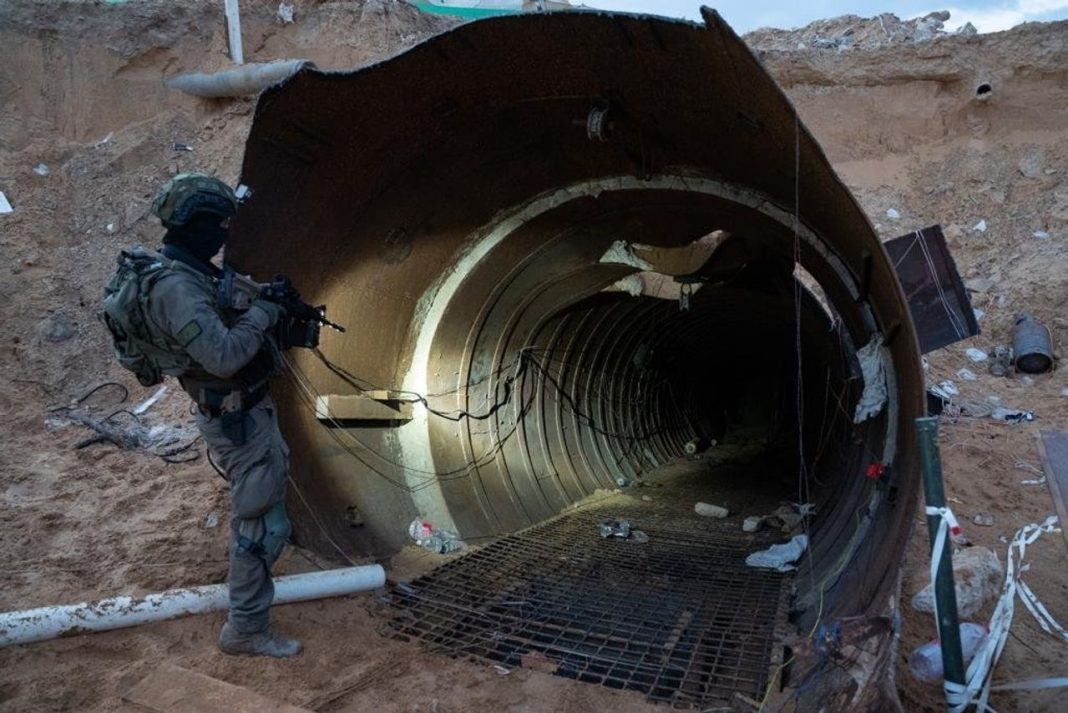As the war on Gaza nears the end of its fourth month, the Israeli military has managed to damage or render inoperable an estimated 20 percent to 40 percent of the vast underground network, according to a Wall Street Journal report citing multiple unnamed US officials.
This is while Israel has so far tried a variety of methods to clear the tunnels, including flooding them with water from the Mediterranean and Israel – ignoring concerns about the impact on Gaza’s freshwater supplies and above ground infrastructure.
US officials reportedly believe that Israel would need many more trained troops to clear the rest of the tunnels, which also hold Hamas leaders and captives.
A new report by US intelligence agencies has concluded that Hamas has lost 20-30 percent of its fighters after months of Israel’s war on the besieged Gaza Strip, meaning it is far from being destroyed.
The report by the US news outlet Wall Street Journal said the agencies also found Hamas still has enough weaponry to continue striking Israeli forces and launch rockets into Israel “for months”.
It noted even though individual Hamas fighters may have to take on more tasks since they have lost comrades, they are far from being incapacitated and have changed their operational tactics to adjust.
The report also added Israeli officials estimate up to 16,000 Hamas fighters have been wounded and about half of those will not be returning to the battlefield. But US estimates puts that number between 10,500 and 11,700 fighters, many of whom could return.
Recently, the New York Times daily claimed that the Israeli military has been “astonished” by the size and quality of the tunnels Hamas has built under the besieged enclave.
The tunnel network was originally estimated to include 250 miles (400 km) of underground passages and bunkers. Israel Defense Forces (IDF) has since revised these estimates to 350-450 miles (560-725 km) or more.
Two officials, who spoke on condition of anonymity, said there were close to 5,700 separate shafts leading into the tunnels under Gaza. None of the numbers could be independently verified, however.
It could take “years” to disable the tunnels, one Israeli official told the newspaper. They need to be mapped, checked for Israeli captives, and “made irreparable”, he stated, acknowledging that the recent attempts to destroy the tunnels by flooding them with seawater “have failed”.
According to another official, Israel is using a “triangle” model to locate the tunnels, which assumes they will be found under any hospital, school or mosque in Gaza.
The Israeli military has underestimated the “extent and importance” of the tunnels to Hamas, which the Times described as an “intelligence failure”.
The IDF has not disclosed the number of soldiers killed and wounded in tunnel warfare. Officially, almost 190 soldiers have been killed and 240 or so seriously wounded in the fighting since the start of the ground campaign in Gaza.
One soldier, who spoke with the Times on condition of anonymity, said that he took had taken part in destroying about 50 tunnels in Beit Hanoun, in the northeast of Gaza. All of them were rigged with bombs and other explosives, wired to be activated remotely.
The Palestinian group Hamas, which maintains de facto control over Gaza, struck at nearby Israeli settlements on October 7, claiming the lives of approximately 1,200 Israelis. Another 250 were taken into the Palestinian enclave as captives. Israel responded by declaring war on Hamas and launching air and artillery strikes on Gaza, followed by ground troops in November.
Almost 26,000 Palestinians have been killed and another 64,000 wounded in the first 100 days of fighting, according to the Gaza health ministry.
